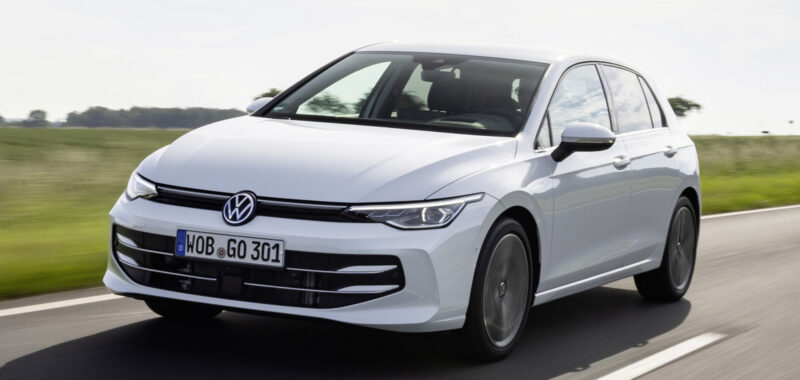It’s guilty of one slightly irksome bugbear, a common frustration in modern cars, although oddly one that other Volkswagens we’ve tested in recent years have avoided: the basic lane-keeping system automatically reactivates every time you restart the engine, whether or not you’ve deactivated it previously in any of the driving modes or profiles. It’s not a particularly fussy system, but its interventions are a little intrusive on a steering rack that otherwise feels obligingly light and pleasant. Sometimes (when overtaking a cyclist, for example), those interventions can take you by surprise.
With that system switched off, though, the Golf’s handling is really all about linearity and predictability, and in that respect, the car is its familiar old self. It responds progressively to steering inputs rather than turning in with darting urgency, and it does allow its body to roll and pitch just a little, but in a way that really only helps you to judge grip levels and to manipulate the chassis a little at higher speeds.
Explore further, beyond a quarter turn of lock, and this car begins to feel really keen and adhesive; fun to spirit along and to flick around, with a subtle (if always-active) stability control system in the background, and ready to express itself a little when you ask it to.
Assisted driving notes
The new Golf gets a very generous allocation of active safety kit as standard, including Front Assist automatic crash mitigation and post-collision braking, adaptive cruise control, city emergency braking with pedestrian detection, dynamic road sign recognition and driver monitoring.
Our test car’s speed-limit detection system worked consistently well, successfully detecting temporary and permanent posted limits. Its level two optional Travel Assist lane-keeping system was effective at keeping the car centred within a relatively straight motorway lane and at a safe distance from the car in front, but you wouldn’t use it on winding A-roads.
The car’s main technological selling point, Car2x wireless networking, is alleged to allow it to detect accidents, incidents and hazards reported by other cars up to a mile ahead on the road. Sadly, it wasn’t operational on our test car, so our verdict on it will have to wait.
Comfort and isolation
In what we might think of as Volkswagen’s more expensive multi-link suspension specification, the Golf rides markedly more smoothly, fluently and quietly than it does on smaller rims and when fitted with a torsion-beam axle at the rear.
It may be an unintended consequence of Volkswagen’s decision to dial up the sporting dynamism of the Golf across the board but, while we wouldn’t have advised you to avoid beam-axle Golfs of the previous generation, this time around it would seem to be a particularly good idea to order a car with 148bhp or more.
Do that and you will get a car with every bit as complete an array of dynamic abilities as the Golf has ever had. The absorbency of the ride is something to be constantly thankful for, whether it’s smothering sharper, smaller inputs so effectively, easing your passage around town or keeping wheel travel in reserve to deal easily with that mid-corner ridge or drain cover. In all places and at most prevailing speeds, whether laterally loaded or not, this car seems to have compliance to spare and without any associated sogginess in the body control.
The 18in rims of our test car didn’t seem to adversely affect its ride suppleness. They probably did add a decibel or two to the cabin noise levels, but not punitively so since the car matched to the decibel the noise levels, at most speeds, of the Mercedes-Benz A200 that we tested in 2018. At 70mph, the Volkswagen was even a decibel quieter than the Mercedes.

